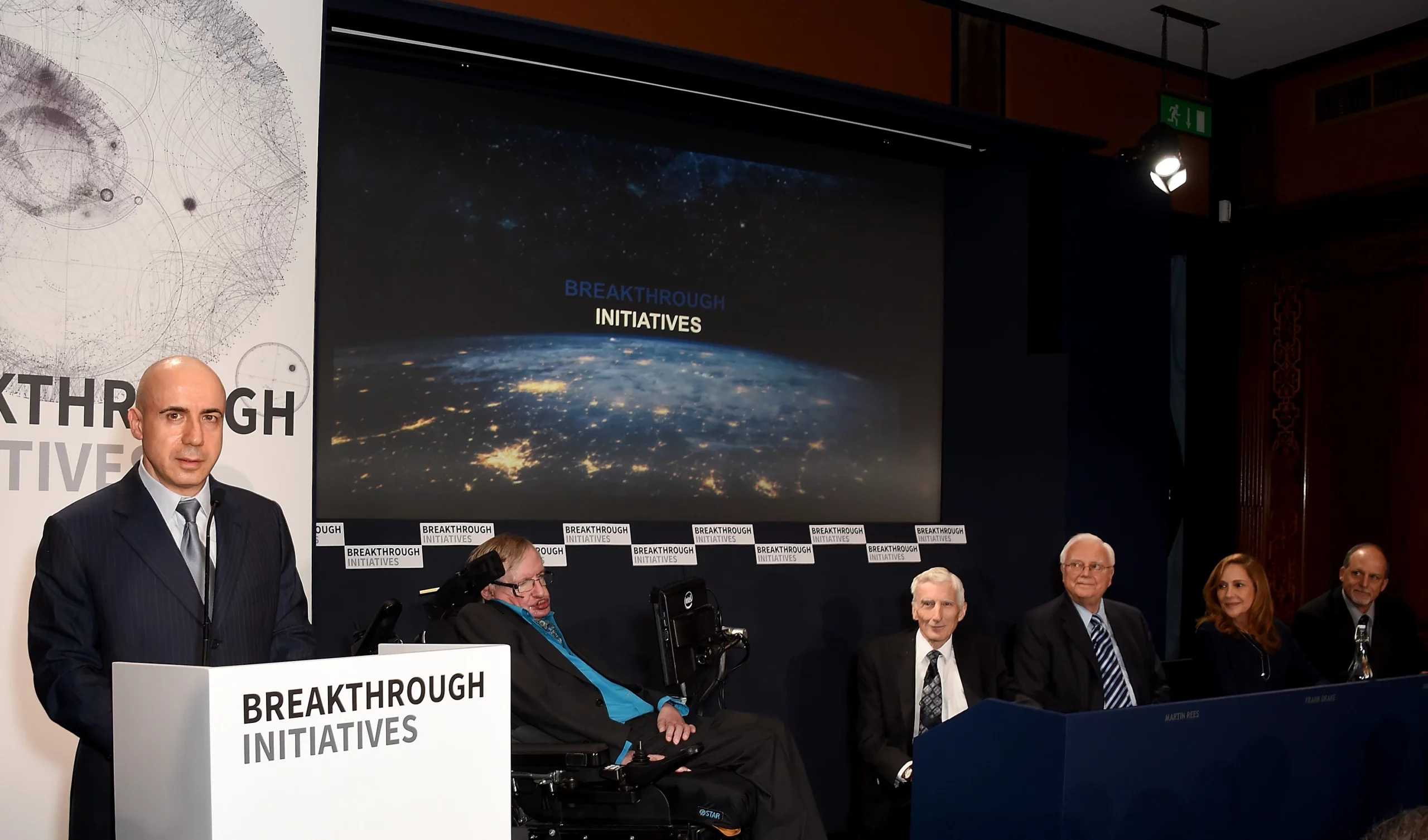Breakthrough Discuss, the first forum for the discussion of science-based inquiry into the possibility of extraterrestrial life, recently concluded its annual meeting at UC Santa Cruz. Under the umbrella of the Breakthrough Initiatives, created by renowned tech investor and philanthropist Yuri Milner, Breakthrough Discuss is the premier forum for the discussion of scientific exploration seeking evidence of extraterrestrial life.
Research presentations at the 2022 conference included a range of topics organized around “A Bigger Bang for Your Buck – Affordable and innovative concepts for cosmological measurement” and “Low Mass Transit – Light, fast and cheap ways to explore the solar system and beyond.”
Making SETI Affordable
Space exploration has traditionally been dominated by governments investing billions of dollars in bespoke systems that are large, inflexible, and at risk of catastrophic failure. For decades, there were few innovations in launch vehicles, keeping launch costs high and limiting the possibilities for pursuing new ideas and creating wider access to space. Even the expense of ground-based telescopes has risen dramatically as aperture sizes increase.

Through his Breakthrough Initiative, Yuri Milner has invested in creating scalable, affordable, and technologically nimble systems that aid the search for extraterrestrial life and intelligence. Advances in artificial intelligence, innovations in materials and optics, low-cost satellites, high-performance electronics, and advances in the life sciences are revitalizing the search for extraterrestrial intelligence. Startups and nonprofit organizations like the Breakthrough Initiatives can now collaborate and even compete with governments in the exploration of space.
What types of innovations have the speakers at Breakthrough Discuss identified as essential to the lower-cost exploration of space?
- Professor Suzanne Staggs of Princeton University is developing ever-more-sensitive densely-populated detector modules and associated cryogenic readout components.
- Dr. Philip Mauskopf has developed and integrated new kinds of quantum-limited photon detectors to measure signals from the most distant locations in the universe.
- Research Professor Shirley Ho is using machine learning to estimate the amount of dark matter in the universe.
- Distinguished Professor Maura McLaughlin has leveraged the discovery of millisecond pulsars to achieve multi-messenger detection of individual sources of gravitational waves.
These were just a few members of the panel of accomplished researchers the Breakthrough Initiatives invited to share work that contributed to the exploration of space from Earth. But Breakthrough Discuss was not earth-bound.
Our solar system, Yuri Milner believes, contains a wealth of targets for travel and exploration. Scientists at Breakthrough Discuss considered the development of small, fast spacecraft that would reduce travel time from decades to months, without the need to time the expedition for help with gravity assistance from Jupiter.
Breakthrough Discuss considered four relatively fast fly-by missions, one being the already-successful New Horizons mission to Pluto, as well as potential trips to the moons of Uranus and the Kuiper belt, a flyby of Triton, and a comet intercept mission. The assembled scientists considered the engineering implications of ScienceCraft. They would be very small, lightweight research vessels powered by solar sails, so light that they could be fueled by the sun’s energy even on missions to the outer planets.

Why Does Yuri Milner Fund the Breakthrough Initiatives?
Yuri Milner and his wife Julia committed to giving away at least half of their fortune when they became signatories to the Giving Pledge. The Milners provide generous support to terrestrial charities. They also fund the Breakthrough Junior Challenge and Breakthrough Prize.
But for Yuri Milner, supporting space exploration has a fundamental value to the whole of humanity. As he wrote in his Eureka Manifesto:
“Any organization that is serious about doing something significant has a mission. But human civilization, as a whole, has nothing resembling a shared mission. In the long term, that means we cannot thrive — or probably even survive. But what could such a mission be? People, nations, and cultures vary wildly. Where on Earth do we look for a common goal?”
Milner’s understanding of this common goal is searching for extraterrestrial life. By looking beyond Earth – including looking for life beyond Earth – Yuri Milner says we join the universal story — whose next chapters we can choose to write.
